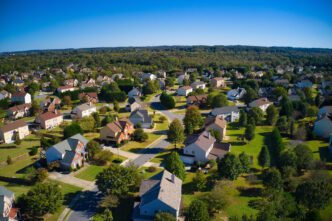In a surprising trend, the number of extra bedrooms in American homes has reached a record high, according to a recent report. This growth signifies a major shift in household dynamics, marked by increasing bedroom counts and decreasing household sizes.
In 2023, the U.S. reached 31.9 million extra bedrooms, reflecting a steady rise from the previous year’s 31.3 million and a significant increase from just 7 million in 1980. This notable growth occurs despite no significant increase in the average home size over the last decade. Instead, the combination of more bedrooms and fewer people per household has created this surplus.
For the first time, extra bedrooms now make up 8.8% of all bedrooms in U.S. homes, up from 8.7% the year before. The trend has been attributed to both the addition of bedrooms in new homes and the decreasing number of people per household, which fell to 2.5 on average in 2023, a stark drop from 3.1 in 1970.
Economist Danielle Hale notes, “During the holidays we often feel the need for more room, especially for guests; however, we are in a golden age of extra bedrooms.” This era of additional space is coupled with a practical use of spare rooms as home offices, a need amplified by recent remote working trends.
Geographically, the Mountain West and Southern regions exhibit the highest count of extra bedrooms, where homes are generally larger due to abundant land. Cities like Ogden, Utah, and Colorado Springs, Colorado, lead with over 12% of total bedrooms considered extra. Conversely, urban areas like Miami, New York, and Los Angeles have the lowest shares, as space comes at a premium.
The data highlights a distinct regional variation, where urban density often dictates home size and layout. However, even in these areas, the demand for multi-functional living spaces continues to grow, especially as more Americans work from home.
The rise of extra bedrooms in U.S. homes underscores a changing residential landscape driven by evolving household sizes and increasing demands for multifunctional spaces. This trend may continue to shape housing market dynamics, influencing both home design and regional property strategies.
Source: Floridarealtors








